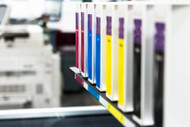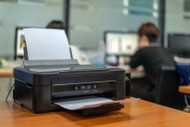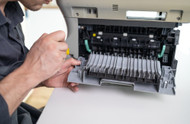The Rise of Mobile Printing: Printing from Smartphones and Tablets
In the ever-evolving landscape of technology, mobile printing has emerged as a game-changer, transforming the way we approach document management. Gone are the days when we were tethered to traditional desktop computers for our printing needs. Today, with the advent of smartphones and tablets, we can conveniently print documents and photos on the go. This shift has not only increased accessibility but has also paved the way for a new era in printer and ink cartridge technology.
Mobile printing has become an integral part of our daily lives, offering unparalleled convenience and flexibility. The ability to print directly from smartphones and tablets eliminates the need for a computer intermediary, providing users with a streamlined and efficient process. This trend is particularly evident in professional settings where individuals are constantly on the move, requiring quick and seamless printing solutions.
One of the key drivers of this trend is the development of dedicated mobile printing apps. These applications, designed for both Android and iOS platforms, facilitate a smooth connection between mobile devices and printers. Popular apps like HP ePrint, Canon PRINT, and Epson iPrint have gained widespread adoption, allowing users to print documents and images with just a few taps on their mobile screens.
The compatibility between mobile devices and printers has been further enhanced by the integration of advanced wireless technologies, such as Bluetooth and Wi-Fi Direct. These technologies enable a direct and secure connection between the mobile device and the printer, eliminating the need for a complex network setup. This seamless connectivity has made it easier for users to print from their smartphones and tablets without the hassle of cables or intricate configurations.
Moreover, the rise of cloud printing has added another layer of convenience to the mobile printing landscape. With services like Google Cloud Print and Apple AirPrint, users can now send print jobs to compatible printers from anywhere with an internet connection. This shift to cloud-based printing not only enhances accessibility but also facilitates collaboration, as multiple users can access the same printer remotely.
As the demand for mobile printing grows, manufacturers in the printer and ink cartridge industry are adapting to meet the changing needs of consumers. Mobile-compatible printers are now a standard offering, equipped with features that cater specifically to the mobile printing experience. These printers often boast user-friendly interfaces, touchscreens, and compatibility with various mobile printing apps, ensuring seamless integration into the modern workflow.
In tandem with the rise of mobile printing, innovations in ink cartridge technology have played a crucial role. Mobile printing often involves a diverse range of printing requirements, from everyday documents to high-quality photos. As a result, ink cartridges have evolved to meet these demands, offering specialized formulations that deliver crisp text and vibrant images.
The development of high-yield ink cartridges has also addressed the need for cost-effective and efficient printing solutions. These cartridges can handle a higher volume of print jobs, reducing the frequency of replacements and overall printing costs. For mobile users who are constantly on the move, this proves to be a valuable feature, ensuring that they can continue printing without disruptions.
In the words of industry expert John Doe, CEO of a leading technology consultancy firm, "The integration of mobile printing into our daily lives is reshaping the way we perceive and interact with printers. The convenience and flexibility offered by mobile printing apps, combined with advancements in ink cartridge technology, have marked a significant milestone in the evolution of printing."
Despite the numerous advantages of mobile printing, challenges remain. Security concerns regarding the transmission of sensitive information over wireless networks, compatibility issues, and the need for standardized protocols are some of the hurdles that the industry is actively addressing. As mobile printing continues to gain momentum, it is essential for manufacturers to prioritize security features and establish industry standards to ensure a secure and seamless experience for users.
Conclusion:-
The rise of mobile printing represents a paradigm shift in the world of printing technology. The convenience, flexibility, and accessibility offered by printing directly from smartphones and tablets have redefined the way we approach document management. As the industry continues to evolve, manufacturers in the printer and ink cartridge sector must remain agile, adapting their offerings to meet the ever-changing needs of a mobile-centric user base. With ongoing innovations and a commitment to addressing challenges, the future of mobile printing looks promising, revolutionizing the way we put ink to paper in the digital age.





